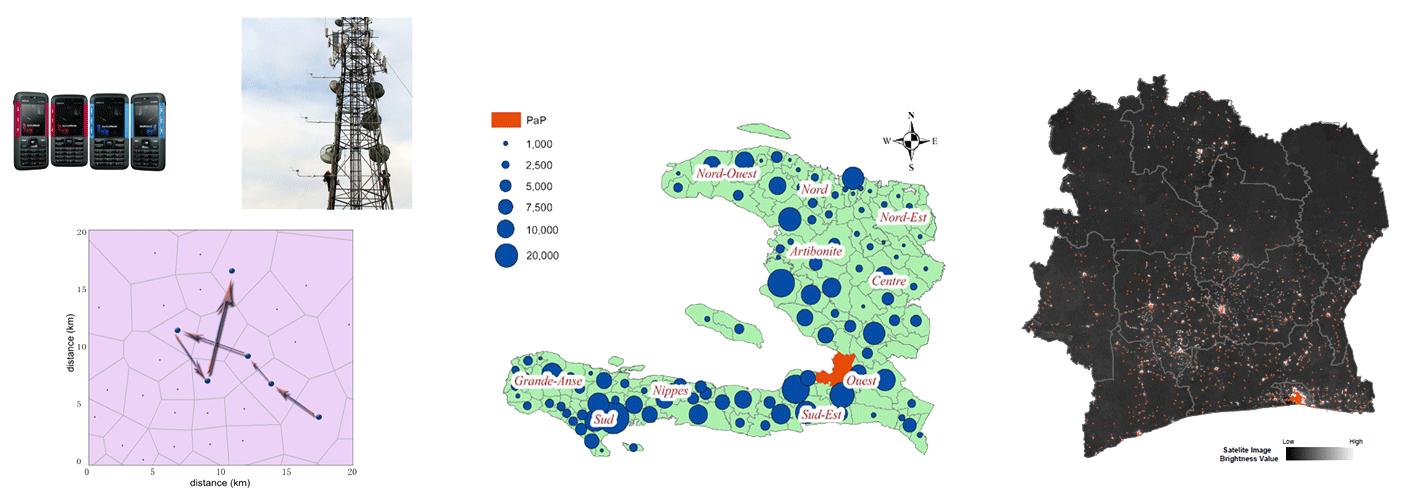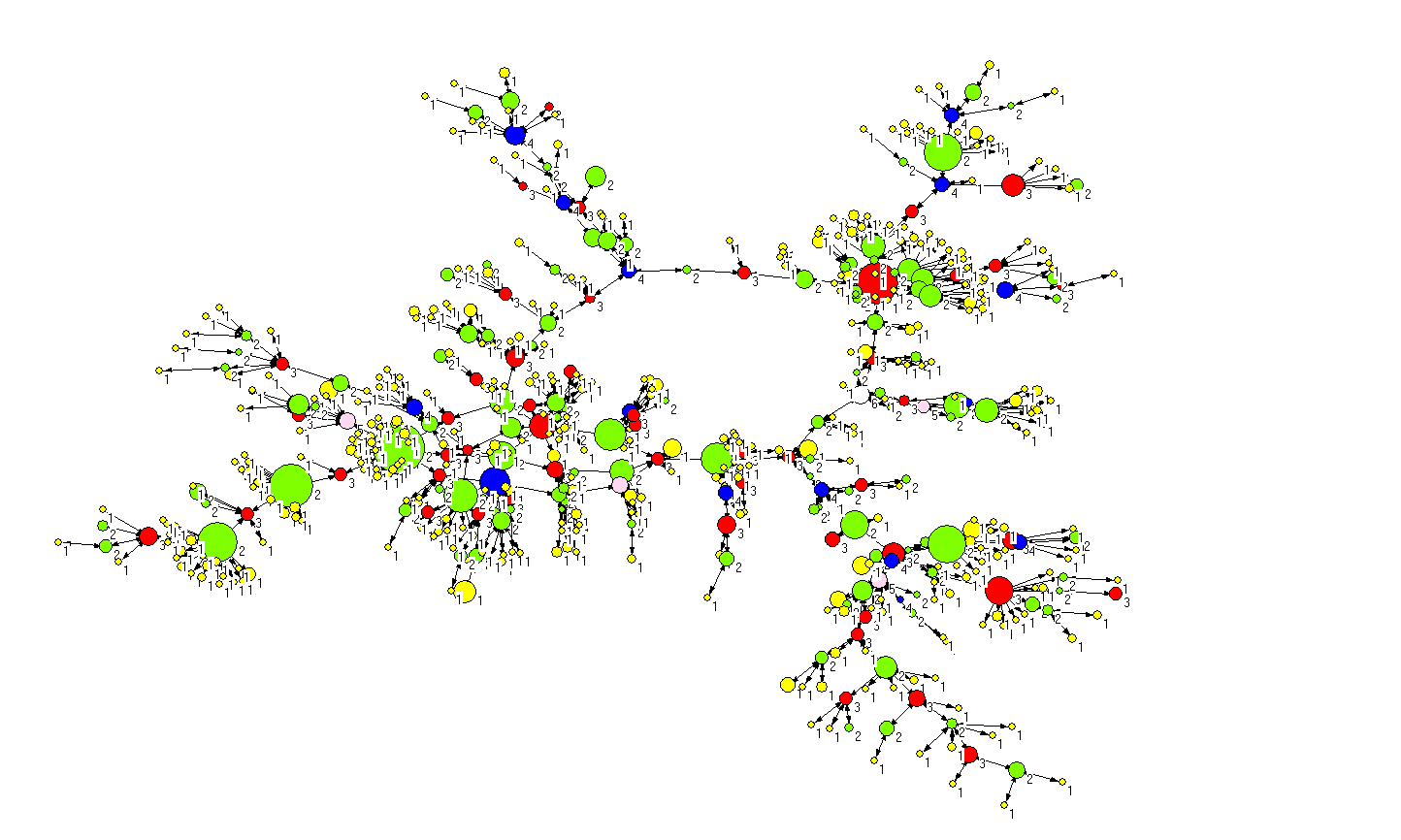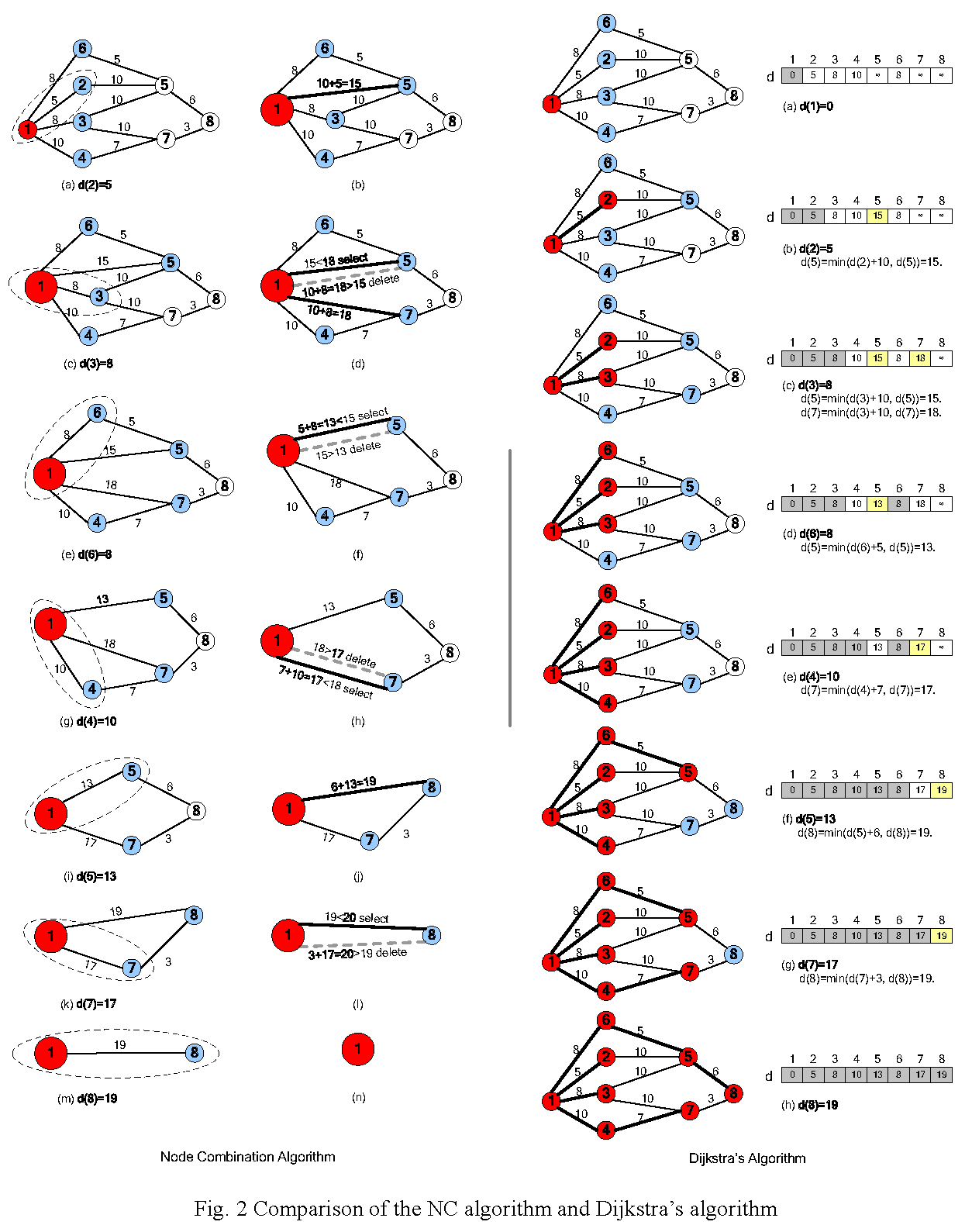NB: pictures shown on this page are for illustrations only, please cite properly if you want to use them!
1. Mobile phone data-based analysis on dynamics of human behavior during disasters
The catastrophic earthquake in Haiti on January 12, 2010 resulted in an estimated official death toll of 230,000, with 3 million people affected overall. With the cooperation of a local mobile phone network operator, we were able to conduct real-time monitoring of population movements during public emergencies, such as the earthquake and cholera outbreak.
Several public reports are available for the above analysis, and we are currently focusing on more in-depth analysis of human travel behavior during disasters. See http://www.reliefweb.int/taxonomy/term/3385 for public extreme events:
- With Linus Bengtsson, Richard Garfield, Anna Thorson,
Johan von
Schreeb. “Preliminary analyses of movement patterns of
Digicel mobile
phones: 1 December 2009 to 19 December 2010”. Karolinska
Institute,
Columbia University, 2011. (pdf)
- With Linus Bengtsson, Richard Garfield, Anna Thorson,
Johan von
Schreeb. “Saint-Marc Cholera Outbreak: Analyses of ongoing
population
movements from the Saint-Marc area, Haiti”. Karolinska
Institute,
Columbia University, 2010. (pdf)
- With Linus Bengtsson, Richard Garfield, Anna Thorson,
Johan von
Schreeb. "Internal population displacement in Haiti:
preliminary
analyses of movement patterns of Digicel mobile phones: 1
January to 11
March 2010". Karolinska Institute, Columbia University,
2010. (pdf)
- With Linus Bengtsson, Richard Garfield, Anna Thorson,
Johan von
Schreeb. "Internal Population displacement in Haiti -
Preliminary
analyses of movement patterns of Digicel mobile phones: 1
December 2009
to 18 June 2010". Karolinska Institute, Columbia
University, 2010. (pdf)

2. Network-based sampling method for hidden populations
Respondent-driven sampling (RDS) is currently a widely used sampling technique for the study of hidden or hard-to-reach populations. With a dual incentive mechanism, respondents recommend that other respondents take part in a RDS interview. By asking the respondents’ (nodes) number of friends (degree) within the studied population, unbiased estimators can be developed based on several assumptions.
We have evaluated the robustness of the unbiased estimators used in RDS when certain assumptions are violated. We find that the bias is large if networks are directed or respondents choose to invite persons based on characteristics that are correlated with the study outcomes. The bias and variance increase if participants invite close as opposed to more distant friends, while sampling without replacement and sampling in denser networks sharply reduce variance. The RDS method shows strong resistance to sampling without replacement and low response rates. We have also found that network eigenvectors are important in generating unbiased estimators. As applications of RDS to study the MSM (men who have sex with men), two separate web-based RDS surveys are currently being conducted in Vietnam and Sweden.

3. Mobility and epidemiology, outbreak detection models for syndromic surveillance systems
Based on population mobility data from the Rufiji region, we are studying how household structures affect the spread of sexually transmitted diseases (STIs), and whether there is evidence that polygamy either accelerates or slows the spread of HIV.
We are building the patients’ contact networks based on sharing of a same ward using the Swedish hospital database, and we are trying to find the most likely transmission paths for MRSA (methicillin-resistant Staphylococcus aureus) from an operational research aspect of view.
I have also been involved in the development of an EU project for implementing an integrated surveillance system for infectious disease in rural China and am responsible for designing and integrating the outbreak detection models (http://www.issc-eu.com/).

4. Dynamics of social organizations
Many systems comprise emergent power laws in their growth rates with respect to the size of units such as companies or cities. We studied online communities and investigated the growth properties of clubs and social communities. We found power-law relations for the average growth rate and for the standard deviation. We have also studied the structure of crime gangs in Stockholm, and found that the probability that a co-offender will be a gang member is potentially correlated with his position in the co-offending network. However, more in-depth investigation needs to be done to validate this finding.

5. Network algorithms, shortest paths, visualization
We proposed a node combination (NC) method to implement Dijkstra’s algorithm by repeatedly combining the source node’s nearest neighbor. The NC algorithm finds the shortest paths using three simple iterative steps: 1. find the nearest neighbor of the source node; 2. combine that node with the source node; and 3. modify the weights on edges that connect to the nearest neighbor. The NC algorithm is more comprehensible and convenient for programming as there is no need to maintain a set with the nodes’ distances.
